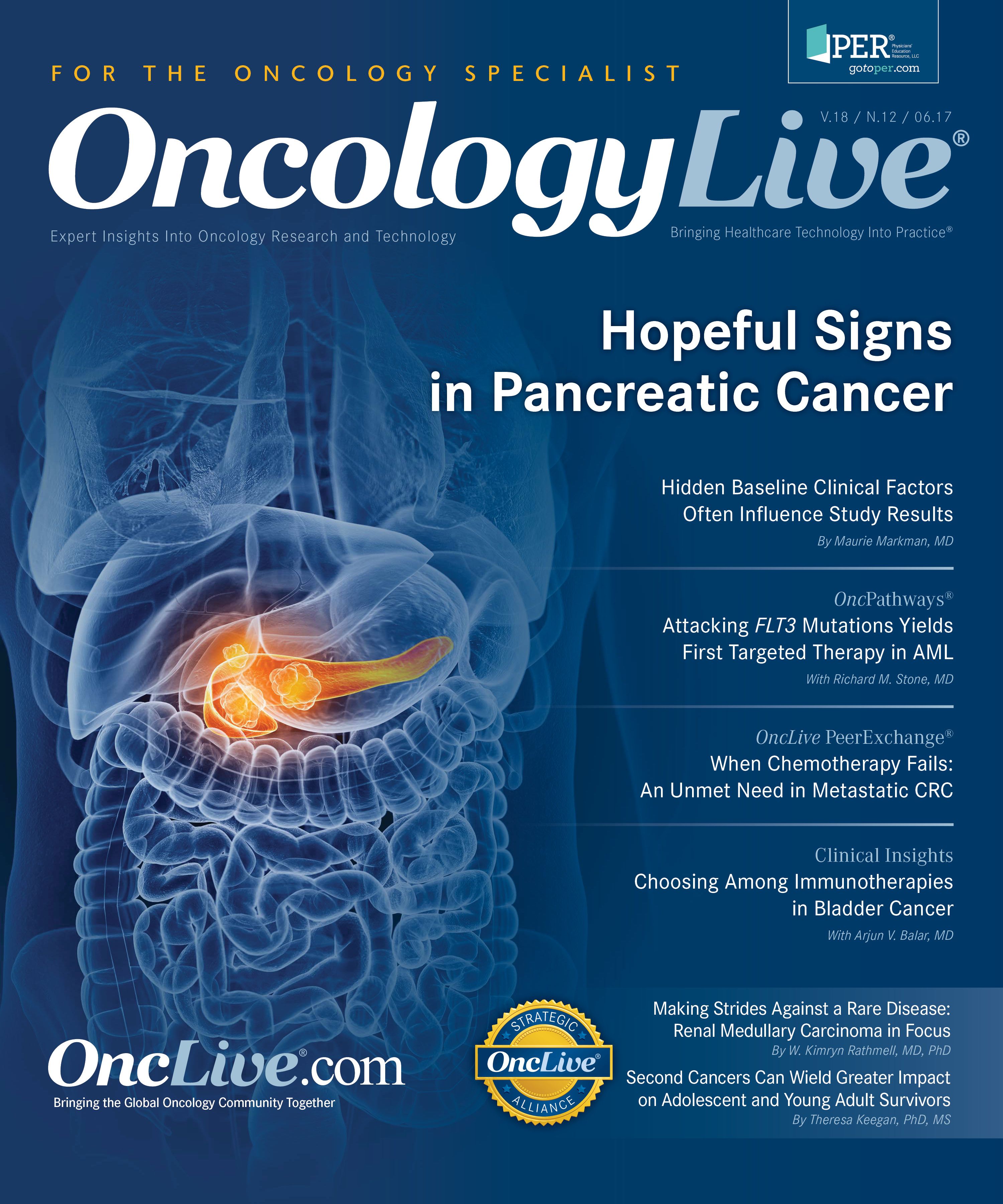No Mortality Difference Between Prostatectomy, Observation in 20-Year Study
Radical prostatectomy does not significantly reduce all-cause or prostate cancer mortality compared with observation through nearly 20 years, according to the results from the phase III PIVOT trial.
Timothy J. Wilt, MD, MPH
Long-term follow-up results from the phase III Prostate Cancer Intervention Versus Observation Trial (PIVOT) indicated that radical prostatectomy does not significantly reduce all-cause or prostate cancer mortality compared with observation through nearly 20 years, according to findings presented at the 2017 American Urological Association Annual Meeting. The results demonstrated that there was not a statistically significant difference in all-cause mortality between patients who received surgery and those who were kept under observation (P = .06).
“We previously demonstrated no significant difference between surgery versus observation in all-cause or prostate cancer mortality through 12 years; however, treatment decisions often require information about very long-term mortality,” Timothy J. Wilt, MD, MPH, professor of medicine at the University of Minnesota School of Medicine and core investigator at the Minneapolis VA Center for Chronic Disease Outcomes Research, said in his presentation at the conference, held May 12 to 16 in Boston.
The PIVOT study was a randomized controlled trial for patients with clinically localized prostate cancer that began recruitment in 1994. The follow-up analysis sought to determine whether radical prostatectomy reduced mortality compared with observation.
The primary endpoint was all-cause mortality, with prostate cancer mortality as the secondary endpoint assessed by a blinded committee. In the original follow-up, according to Wilt, investigators also addressed bone metastases, disease progression, patientreported outcomes, and erectile, urinary, and bowel dysfunction.
The study sought to recruit men who were 75 years or younger, diagnosed within the previous 12 months, and who had a life expectancy of at least 10 years. Patients could have any grade of prostate cancer, including stage T1 to T2 and M0 disease, as long as they were viable candidates for radical prostatectomy. Their prostate-specific antigen (PSA) levels had to be less than 50 ng/mL.
Based on these criteria, 731 patients were randomized to receive either a radical prostatectomy (n = 364) or observation (n = 367). Notably, Wilt said, observation in the PIVOT study included palliative therapy for symptomatic progression, which is different from commonly used PSA-based monitoring and biopsy-based active surveillance programs with delayed radical intervention. The patients in the observation group were offered palliative therapy or chemotherapy for symptomatic or metastatic disease progression.
The average age of the participants was 66.8 years with a mean PSA of 10.2 ng/mL in the observation arm and 67 years with a mean PSA of 10.1 ng/mL in the surgery arm. In terms of comorbidities, Wilt commented, “They were healthy; more than 50% had no comorbidities.”
The investigators also factored in the patients’ D’Amico tumor risk classifications at time of baseline biopsy (Figure), with the observation arm having 40.3% of patients at low risk, 32.7% at intermediate risk, and 21.8% at high risk. The surgery arm had 40.7% of patients at low risk, 35.4% at intermediate risk, and 21.2% at high risk. “When using central histopathologic classification, two-thirds of men had intermediate or higher risk disease,” Wilt noted.
In the surgery arm, 85.5% of patients underwent radical intervention, most within the first 6 months after randomization. In contrast, 20.4% of patients in the observation group underwent radical intervention, with radical intervention being rare 4 to 5 years after randomization. “We followed men for nearly 20 years, with a median of 12.7 years from randomization to death, or the end of the study,” Wilt said.
Table. Radical Prostatectomy Versus Observation
The rate of all-cause mortality observed by the end of the study was 64% (468 patients). Particularly in patients with low-risk prostate cancer, treatment with radical prostatectomy did not reduce all-cause mortality, with an absolute risk difference of 0.6% (Table).The observed prostate cancer mortality rate was 9.4% (69 patients total), which was deemed infrequent, and did not vary based on patient characteristics. However, prostate cancer mortality did vary based on tumor characteristics. Prostate cancer mortality was observed in 4.8% of low-risk patients, 12.2% of intermediate-risk patients, and 15.9% of high-risk patients. The absolute risk difference was 4.0% and was not statistically significant.
“Based on these findings, observation or PSA monitoring—not active surveillance with delayed radical intervention—is preferred for men with low-risk prostate cancer, and for many men with higher-risk disease when they are age 65 or older with life-limiting comorbidities, because it results in similar mortality with fewer treatment-related harms,” Wilt said. “However, more effective and safer therapies are needed for younger men with higher-risk disease.”
Wilt TJ, Jones K, Barry M, et al. Radical prostatectomy versus observation for early prostate cancer: follow-up results of the Prostate Cancer Intervention Versus Observation trial (PIVOT). Abstract presented at: 2017 American Urological Association Annual Meeting; May 12-16, 2017; Boston, MA. Abstract PNFLBA-11. www.aua2017.org/webcasts/ webcast_play.cfm?videoID=5501&agendaid=14263&.




